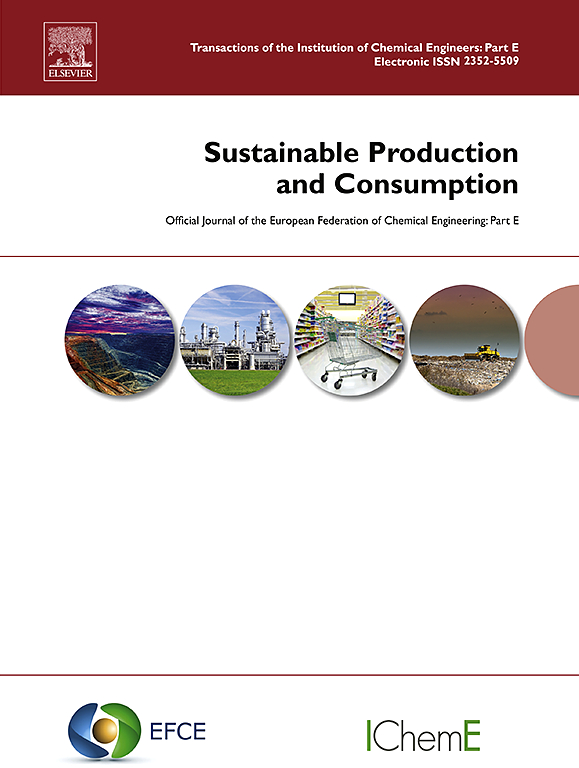Circular business model innovation: Uncovering practices and patterns to retain the value of resources
IF 9.6
1区 环境科学与生态学
Q1 ENVIRONMENTAL STUDIES
引用次数: 0
Abstract
Transitioning to a circular economy offers an alternative to the current linear model. Research on circular business models is growing but remains at a nascent stage, leaving a gap in understanding how individual firms transition towards circularity. This study analyses 63 cases of companies having implemented a circular business model innovation (CBMI) using content analysis of case studies descriptions and related corporate websites. We extend previous research by using a three-level analysis examining simultaneously resource retention options (RO), managerial practices, and business model value dimensions to understand how firms introduce circular economy practices in their business model to maximize resource value retention. Our study shows which 10 ROs are chosen by companies when they move to a circular business model and besides recycling and reducing, rethinking appears the most implemented RO. We identify 46 distinct CBMI managerial practices that companies implement across the three core business model dimensions—value proposition, value creation and delivery, and value capture. The analysis of the various combinations of RO and managerial practices in the different value dimensions of the business model implemented by the studied companies identifies five CBMI patterns, representing recurring combinations of practices that reshape business models towards circularity. Our results show that CBMI cannot be implemented as a one-size-fits-all solution and that firms must adopt a tailored approach depending on various aspects such as size, industry, consumer segment, as well as, resource availability and motivational drivers, by implementing circular practices across multiple business model dimensions while combining various ROs to enhance circularity. These insights contribute to the literature by offering a structured three-level approach for analysing CBMI and providing actionable guidance for firms aiming to implement circular strategies. Our study highlights the need for a holistic approach that integrates business model and circular economy perspectives.
循环商业模式创新:揭示保留资源价值的实践和模式
向循环经济的过渡为当前的线性模式提供了另一种选择。对循环商业模式的研究正在增长,但仍处于起步阶段,在理解单个公司如何向循环转型方面存在差距。本研究通过对案例描述和相关企业网站的内容分析,分析了63个实施循环商业模式创新(CBMI)的企业案例。我们通过同时考察资源保留选项(RO)、管理实践和商业模式价值维度的三层次分析来扩展先前的研究,以了解企业如何在其商业模式中引入循环经济实践以最大化资源价值保留。我们的研究表明,当企业转向循环商业模式时,他们选择了哪10种RO,除了回收和减少之外,重新思考似乎是实施最多的RO。我们确定了46种不同的CBMI管理实践,公司在三个核心业务模型维度上实施,即价值主张、价值创造和交付以及价值获取。通过对RO和管理实践在被研究公司实施的商业模式的不同价值维度中的各种组合的分析,确定了五种CBMI模式,代表了重塑商业模式的循环实践组合。我们的研究结果表明,CBMI不能作为一刀切的解决方案来实施,企业必须根据规模、行业、消费者群体、资源可用性和动机驱动因素等各个方面采取量身定制的方法,通过在多个商业模式维度上实施循环实践,同时结合各种ro来增强循环性。这些见解通过提供结构化的三层方法来分析CBMI,并为旨在实施循环战略的公司提供可操作的指导,从而有助于文献。我们的研究强调需要一种综合商业模式和循环经济观点的整体方法。
本文章由计算机程序翻译,如有差异,请以英文原文为准。
求助全文
约1分钟内获得全文
求助全文
来源期刊

Sustainable Production and Consumption
Environmental Science-Environmental Engineering
CiteScore
17.40
自引率
7.40%
发文量
389
审稿时长
13 days
期刊介绍:
Sustainable production and consumption refers to the production and utilization of goods and services in a way that benefits society, is economically viable, and has minimal environmental impact throughout its entire lifespan. Our journal is dedicated to publishing top-notch interdisciplinary research and practical studies in this emerging field. We take a distinctive approach by examining the interplay between technology, consumption patterns, and policy to identify sustainable solutions for both production and consumption systems.
 求助内容:
求助内容: 应助结果提醒方式:
应助结果提醒方式:


